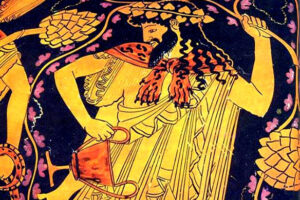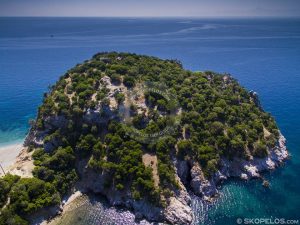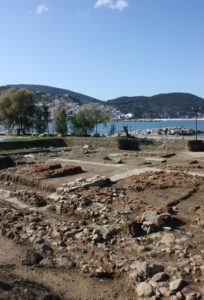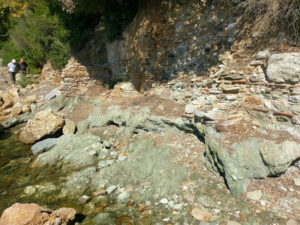Skopelos Archaeological Research, Archaelogical Findings, Mycenaean Sword in Skopelos, Skopelos History, Skopelos Mythology, Prince Stafylos, Skopelos Stafylos Tomb, Skopelos Stafylos Sword, Ancient Years, Peparithos, Skopelos Wine, Askos Ancient Skopelos Survey, Skopelos Ancient Selinous, Archaeological Museum of Athens, Skopelos Northern Sporades, Greece, Skopelos Blogspot, Skopelos blogging, Skopelos blogs, Skopelos bloggers, Skopelos blog
Skopelos: A New Dimension in Archaeological Research
The Ancient Skopelos Survey – AskoS is an innovative archaeological project that began in 2024, aiming to explore and uncover the island’s ancient past. This collaborative effort, involving the Ministry of Culture, the Polish Archaeological Institute in Athens, and the Directorate of Antiquities of Magnesia, will continue until 2028. The research combines modern techniques to provide new insights into Skopelos’ rich historical heritage, with the first findings already offering exciting glimpses into its ancient history.
The Skopelos Island, in ancient times, was known as Peparethos, and its earliest settlers were Cretans from the city of Knossos. The island’s name, Peparethos, is derived from the first inhabitant, Peparethos, who was the brother of Stafylos. According to Greek mythology, Peparithos and Stafylos were the sons of Dionysus, the god of wine, and Ariadne, the daughter of King Minoas of Crete.
SKOPELOS MYTHOLOGY
Dionysus, revered as the god of the grape harvest, wine, revelry, and ecstasy, was a central figure in Greek mythology, often associated with fertility and the pleasures of life.
Ariadne, their mother, was a princess of Crete, known for aiding Theseus in escaping the labyrinth and later marrying the god Dionysus. King Minoas, Ariadne’s father, ruled Crete and was known for his role in the myth of the Minotaur. His legendary kingdom of Crete was at the heart of Minoan civilization, which flourished during the Aegean Bronze Age.
Prince stafylos
Prince Stafylos, their son, became a significant figure in the ancient world, particularly linked to the island’s wine-producing legacy. His name itself, meaning “grape,” symbolizes his association with viticulture and the spread of winemaking practices. This connection laid the foundation for the island’s later reputation for producing fine wine.

The myth even says that Stafylos was one of the 50 Argonauts who participated in the campaign to Colchis, helping Jason bring back the Golden Fleece.
STAFYLOS TOMB
In 1936, Professor N. Platon discovered a remarkable tomb at the end of a small peninsula between Velanio and Staphylos beaches. This tomb believed to belong to Prince Stafylos, contained numerous valuable artifacts, shedding light on the island’s rich past.
Among the most important discoveries in the tomb was the Sword of Stafylos, a significant artifact from the Minoan and Mycenaean periods, known for its exceptional craftsmanship. The Stafylos site is the most significant and renowned archaeological location on Skopelos, as excavations have revealed traces of settlements from the Mycenaean era.
THE SWORD OF STAFYLOS
The Sword of Stafylos is considered an important piece of ancient art, connecting Skopelos to the wider Mediterranean world. The sword’s location and the tomb’s artifacts provide strong evidence that this was indeed the final resting place of Stafylos, the legendary prince. The tomb is located near Staphylos Beach, an area whose name has remained unchanged for millennia, further supporting the identification of the tomb’s occupant as Prince Stafylos.
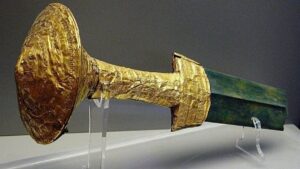
Today, the Sword of Stafylos is housed in the Archaeological Museum of Athens, where it continues to captivate visitors with its intricate design and historical significance. This artifact remains a symbol of Skopelos’ ancient ties to the gods, its rich cultural heritage, and the legacy of its mythical rulers. Moreover, the remarkable sword measures 32 centimeters in length, making it the largest of its kind discovered in Greece.
OTHER ARCHAEOLOGICAL FINDINGS IN SKOPELOS
Within the boundaries of Skopelos Town lies the Asklepieion of ancient Peparethos. This sanctuary has been identified as dedicated to Asclepius, the god of medicine, based on epigraphic evidence such as dedicatory inscriptions and roof tile seals bearing the god’s name. The Asklepieion was first identified in the early 1960s and underwent systematic excavations in the following years.
Selinus, also known as Selinountas, was one of the three historic cities of ancient Peparethos. Today, only remnants of the city’s southeastern walls and an ancient structure, dating back to the 5th–4th century BCE, remain. In 1865, a marble statue of the goddess Athena was discovered in the area, identified as a replica of the famous Athena Parthenos created by the renowned sculptor Phidias. This statue is now housed in the National Archaeological Museum of Athens.
Exploring New Horizons in Archaeological Research
A new and ambitious archaeological project, titled Ancient Skopelos Survey – AskoS, began on Skopelos in September 2024. Implemented by the Ministry of Culture and the Polish Archaeological Institute in Athens, under the supervision of the Directorate of Antiquities of Magnesia, this program will continue every year during the same month until 2028, aiming to uncover unknown aspects of the island’s cultural wealth.

The Directorate of Antiquities of Magnesia plays a key role in the project, with Dr. Anthi Batzio, who serves as the co-director, and archaeologists Iakovos Georgiou and Dimitris Agnosiotis. The initial findings have already sparked significant interest, and these will undergo thorough study before being presented to the public shortly.
The project also involves three prominent academic institutions: the University of Warsaw, led by Professor Agata Ulanowska, who is also a co-director of the program; Charles University in Prague, represented by Professor Peter Pavúk; and the University of Heidelberg, with Dr. Filip Francović. Postgraduate and doctoral students from these universities are also participating, adding an international dimension to the initiative.
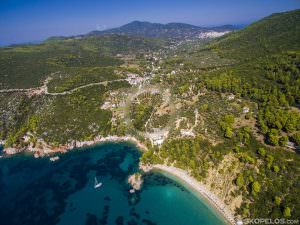
This endeavor seeks to uncover Skopelos’ untapped archaeological wealth, which has largely remained hidden until now. Thanks to the combined efforts on land and from the air, AskoS (Ancient Skopelos Survey) is expected to shed new light on the island’s historical heritage and provide fresh insights into its past.
The Ancient Skopelos Survey is poised to make groundbreaking contributions to the understanding of the island’s rich ancient history, revealing hidden layers of its past through innovative research methods.
Skopelos.com – Skopelos Blog
Blog.Skopelos.com – Skopelos.com/Blog


